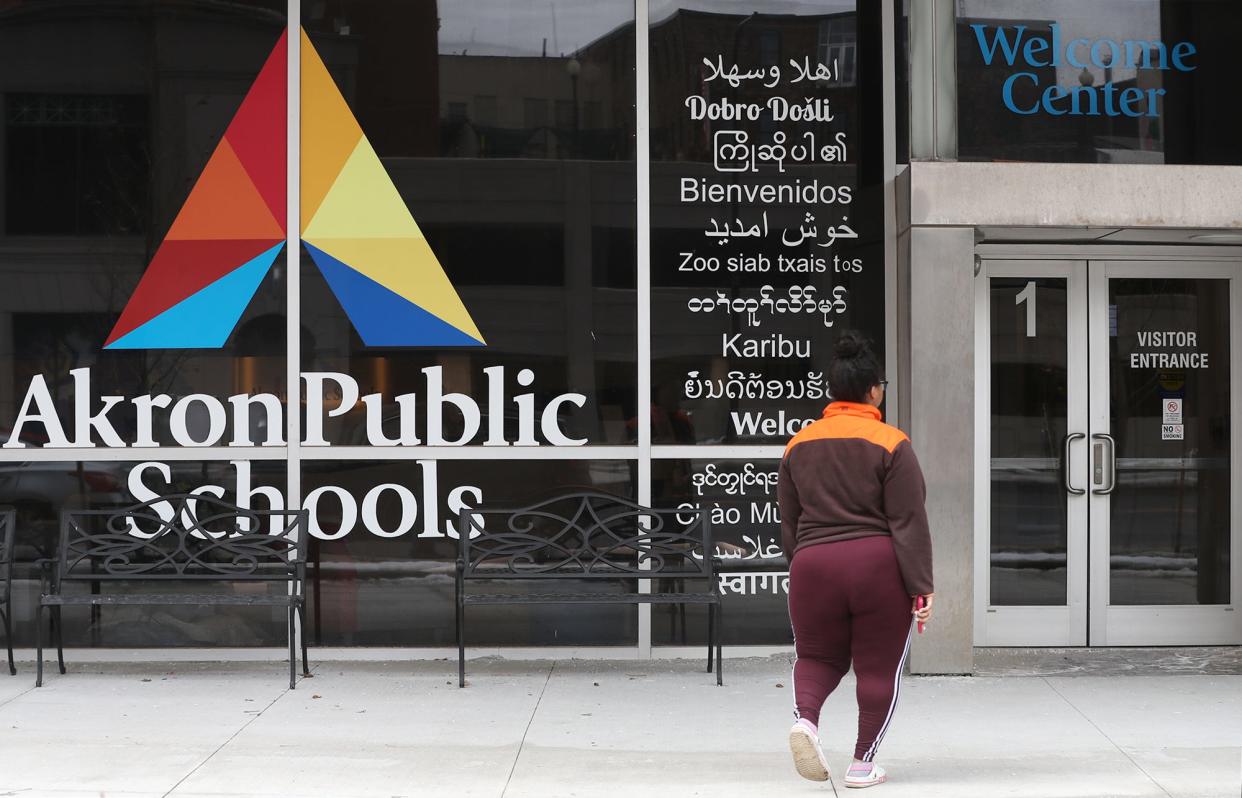Here's how Akron Public Schools decides whether to notify parents, staff about threats

The Beacon Journal’s review of 240 police reports covering the first 74 days of school this year in Akron revealed several incidents of terroristic threats or drug use not reported publicly.
Of great concern to staff was an incident at North High School where counselors last month notified police of a suicidal teenage girl. In her book bag, which was retrieved from the school by a friend after the girl was taken to the hospital, were journal entries written in aliases. The entries named specific staff she would kill in what she planned to be “the largest school shooting ever,” according to the police report.
The district has created and follows standard forms, which the union praises for their comprehensiveness, to determine whether a threat is real and how to respond. In this case, staff members weren't notified for days. And it's unclear if parents were ever made aware as the district uses special discretion before alerting the public to every threat coming to or from the schools.
Read our full story on APS safety:Police reports paint disturbing, violent picture
Police reports:We examined 240 police reports on incidents at Akron Public Schools. Here's what we found
Improving safety:Six solutions to make Akron Public Schools safer for students and staff
Threat assessments and the duty to warn staff "are typically handled very well, to be quite honest with you," said Dan Richards, a school counselor and union official in the Akron Education Association. "But there are some and, that's an example, where it gets missed. And the ways it gets missed are inexcusable."
Administrators said they work with police to investigate the scope and credibility of every threat.
“And very often, they'll tell us right away, ‘This is nothing,’ ” said Mark Williamson, director of marketing communications at Akron Public Schools. “They'll know. From their experience, they know.”
'Increasingly not safe':Akron schools' staff members say student misbehavior on the rise
Anonymous notes found in trash cans, rumors and screenshots of threatening social media posts, shooting threats uttered by kids chased off school property, reports of guns relayed by officers in other schools and swatting calls that try to get SWAT teams to swarm to schools using fake bomb threats have all been investigated this school year in the police reports reviewed by the Beacon Journal.
But they’re not all reported to the public.
While loaded guns found in Litchfield and Firestone and two bomb threats in a single day at Jennings were reported quickly to the media, there’s no indication that the press or the public were made aware of a fake call of an active shooter at Garfield in late September or the two loaded handguns found in a student’s car in the parking lot of Buchtel Community Learning Center, where an adult female on a separate occasion was seen with a gun.
When students get sick from ingesting substances, it’s sometimes reported to parents, and sometimes not. For example, it was reported by the school district in mid-August when six Litchfield students, including one who went to the hospital, experienced overdose symptoms after eating marijuana gummies. But it wasn’t reported when a girl at Firestone high school next door got sick and went to the hospital the week before, or when a hyperventilating and crying student at Jennings CLC admitted in December that she got a gummy from another student, who denied any part in the incident.
It’s the judgment call of Williamson and others as to whether and when threat notifications go out to staff and parents.
Without being able to talk publicly about unreported examples the Beacon Journal found in public police reports, Williamson explained that the decision to notify must consider the personal privacy of students, the credibility and potential reach of the threat, whether misinformation already exists on social media and whether the release of information could cause unnecessary panic.
While the delay and lack of notification in the North High School incident enraged some staff members, including the leaders of the teachers union, it’s a prime example of the limitations the district imposes in balancing transparency and security.
The district, according to its notification policy, would not have been able to report that the girl was receiving mental treatment at Akron Children’s Hospital when the journal was found in her book bag. The release sent to the public could have characterized the threat and explained that the student in question had been removed from the school.
But that may not have been enough for the public, which could then turn to social media and other ways to fill in the missing information with damaging rumors.
"We find ourselves having to correct something that's on Facebook, which is absurd," Williamson said.
Reach reporter Doug Livingston at dlivingston@thebeaconjournal.com or 330-996-3792.
This article originally appeared on Akron Beacon Journal: Why Akron Public Schools doesn't publicly share all threats to safety

